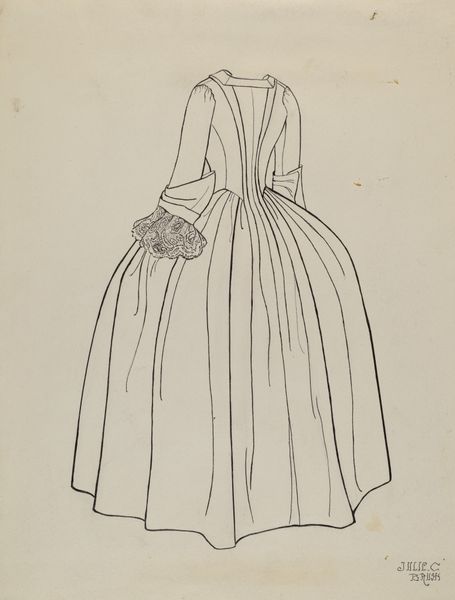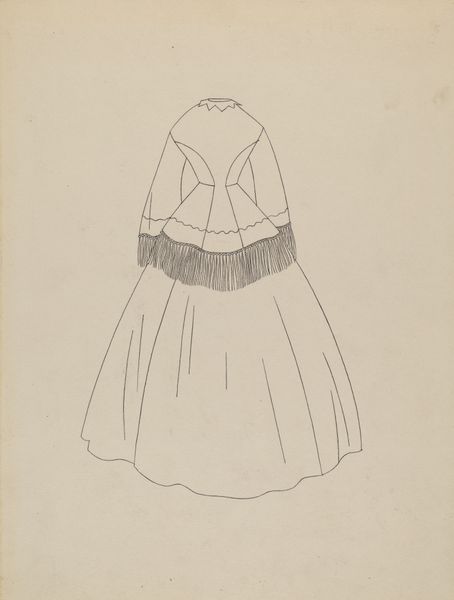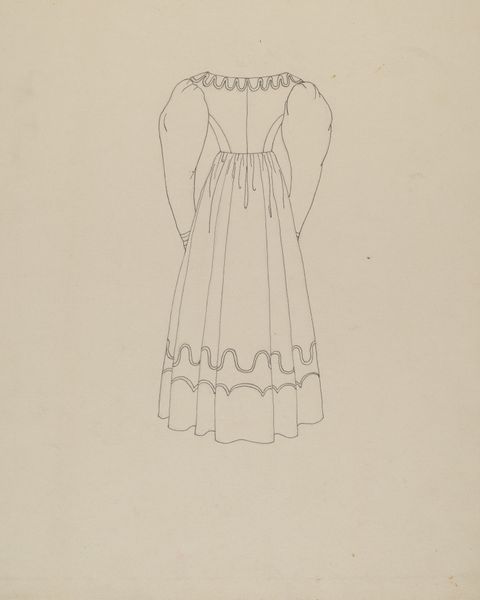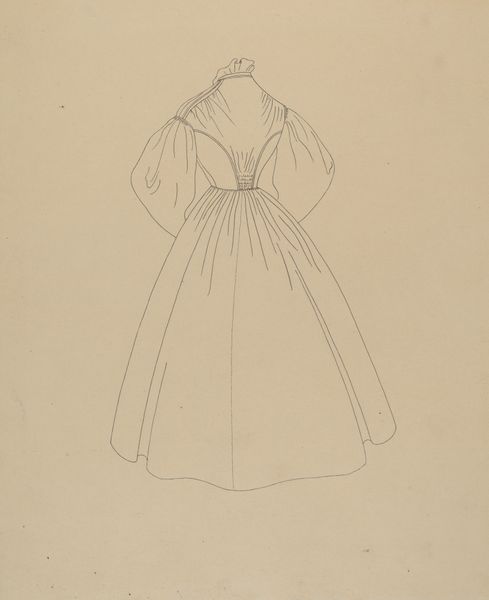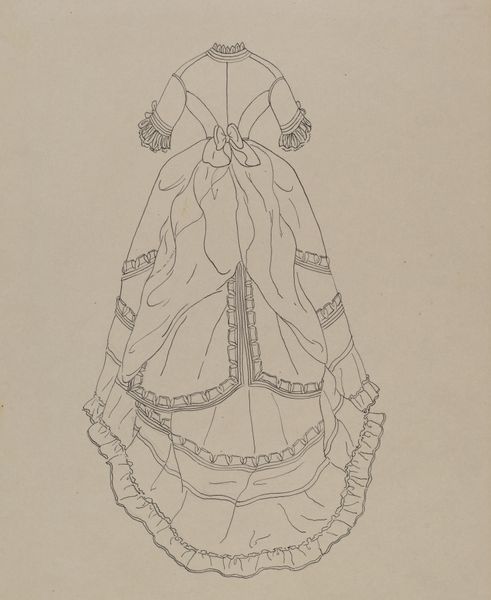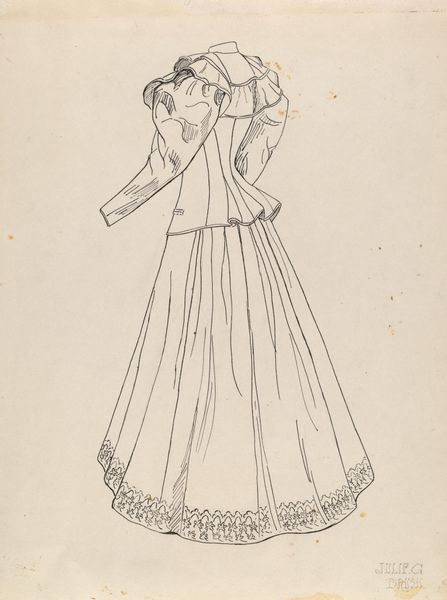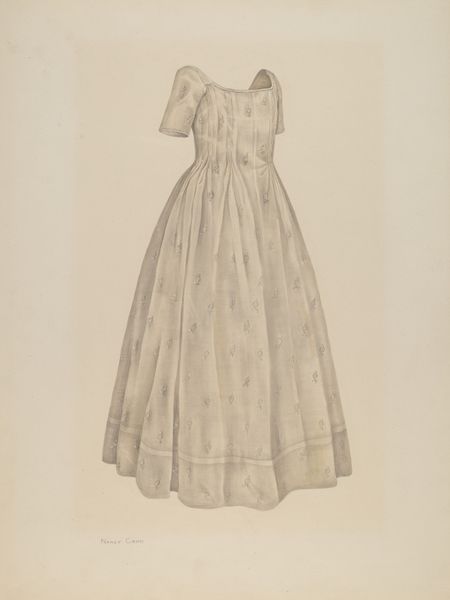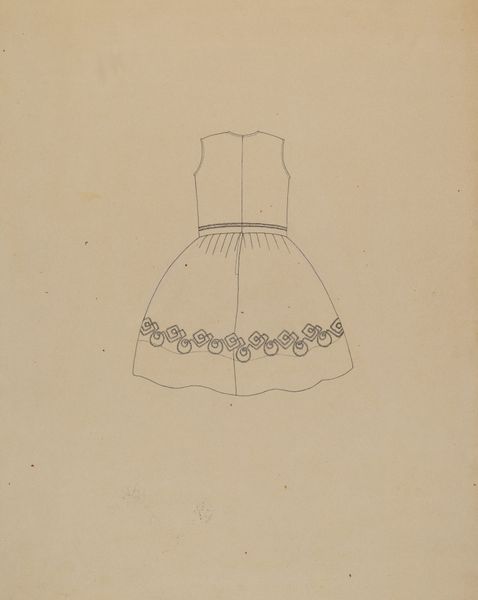
drawing, graphic-art, paper, pen
#
drawing
#
graphic-art
#
underwear fashion design
#
light pencil work
#
fashion mockup
#
paper
#
personal sketchbook
#
historical fashion
#
traditional dress
#
sketchbook drawing
#
pen
#
decorative-art
#
fashion sketch
#
clothing design
#
bridal fashion
Dimensions: overall: 35.9 x 28.1 cm (14 1/8 x 11 1/16 in.)
Copyright: National Gallery of Art: CC0 1.0
Editor: Here we have "Dress," a pen and pencil drawing on paper created by Julie C. Brush sometime between 1935 and 1942. There’s a certain quaintness to it, and almost a ghostliness, because there’s no body *in* the dress. How would you interpret this work? Curator: Consider the sleeve – the gigot sleeve. What associations do we have with that shape? Editor: I’m not sure... other than, well, the 1830s? Curator: Precisely. The gigot sleeve enjoyed a huge resurgence during the late 1930s, exaggerating the shoulder in a way that conveyed feminine strength and elegance simultaneously. Also, think about a “dress.” Is it simply apparel? Editor: Not really. I suppose clothing is always a statement, whether intentional or not. A signifier of class, of course, and time period, taste. Is it meant to convey aspiration, even? Curator: Quite right. And even fantasy. This detailed sketch might be aspirational for the artist herself. We cannot help but see that Brush rendered a lovely fantasy and then inscribed her signature below. Why might a sketch of historical dress hold such resonance during times of austerity? What cultural memories is she drawing on? Editor: So it's less about the dress itself, and more about what it symbolizes in that moment in time. Perhaps even a longing for a different era? I never considered that. Curator: Visual symbols rarely exist in isolation; they echo across generations. And it may also represent freedom and autonomy – making it, designing it, as acts of hope and empowerment in times of duress. Editor: Fascinating. Now, I am thinking about those layered meanings attached to everyday imagery. It opens the work up completely!
Comments
No comments
Be the first to comment and join the conversation on the ultimate creative platform.


